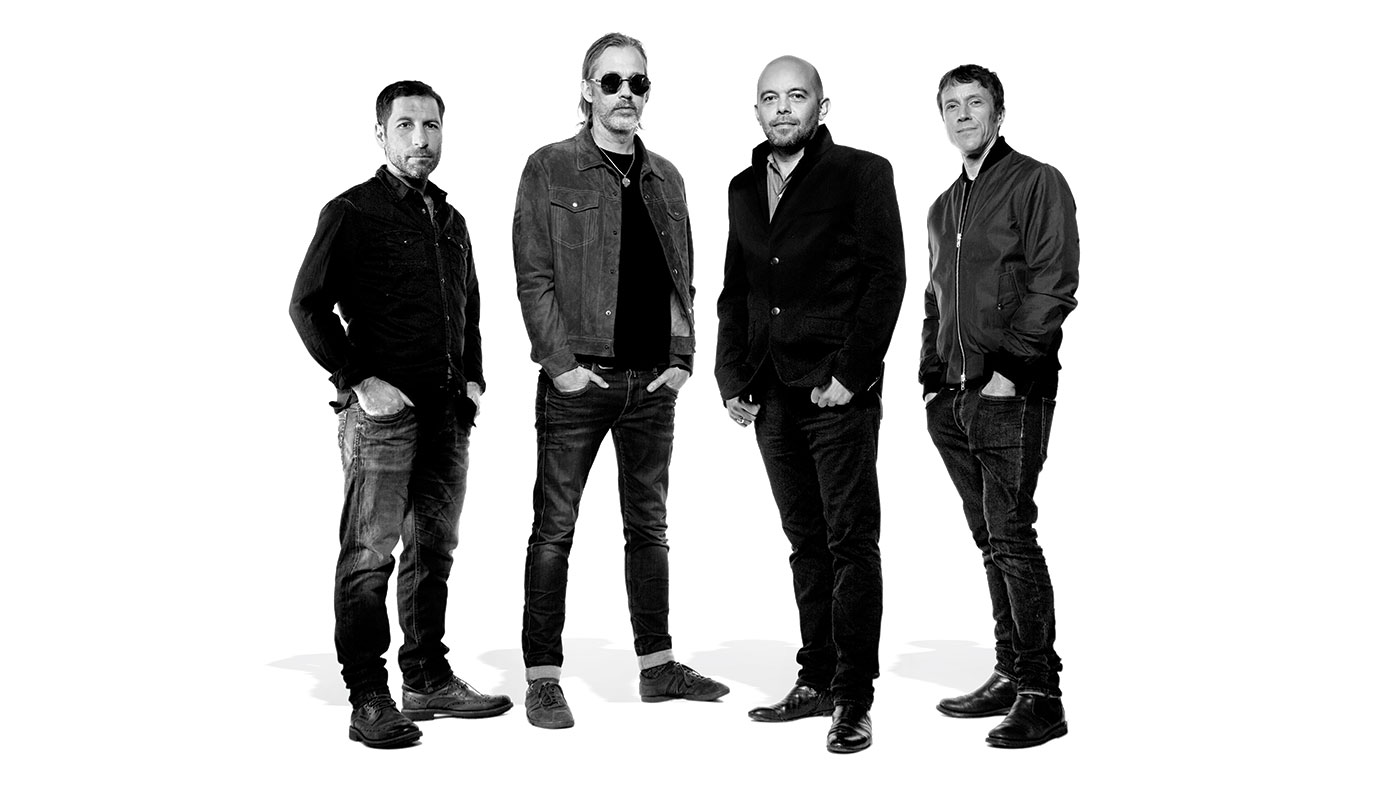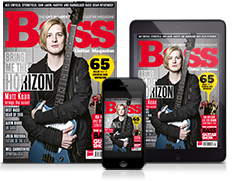Steve Queralt talks Ride's Weather Diaries: "I used a four-string Steinberger bass for a lot of the recording"
The bassist on shoegaze, Stingrays and losing his head

Shoegaze pioneers Ride return, and, as the band's bassist Steve Queralt writes, headless basses are due to have a fashion moment...
On our new album, Weather Diaries, I used a small Ampeg Portaflex and a DI. I rely on the engineers to find the right frequency range for the bass. Each band member in Ride likes to be heard: if we’re going to play an instrument, it’s got to fit in somehow.
That’s why quite a lot of the bass on the album has a lot of overdrive or distortion on it, to add some character. I don’t like just playing along with the root note - I have to add something, or at least pretend to myself that I’m adding something, haha!
I used a four-string Steinberger bass for a lot of the recording - no-one must ever know that I used one (I’m joking). It’s the full-body one, not the wedge-shaped one, so it’s almost there, it just needs a headstock! The sound of it was brilliant.
All the dirty, overdriven, natural clean sounds - if that makes sense - come from the Steinberger
I bought it when we did our second album [Going Blank Again, 1992] and we were recording with Alan Moulder, who suggested I get one - we just laughed at the time. But he persuaded me eventually, and I’ve used it for recording ever since. It’s absolutely bang-on, all the time. All the dirty, overdriven, natural clean sounds - if that makes sense - come from the Steinberger.
I’ve never played it live, though. Shoegaze was very image-conscious: all about staring at your pedals and being too cool for school. A big white Steinberger wouldn’t have fitted in. Bill Wyman had the same one. It really has such a cool, angry sound, and there’s no dead spots on the neck. It sounds really alive, with loads of tonal quality.
Live, I’ve always used a Music Man Stingray, right from the early days. I bought it brand new in 1990. I still play it: it really is a nice bass, nothing comes close to its sound. I also use a Fender Jaguar bass as a live backup, but it’s active so it’s a bit lively, so the nice people at Fender have given me an American P-Bass which I’m going to take out on the next dates, just to deal with the songs that have a classic bass sound.
Get the MusicRadar Newsletter
Want all the hottest music and gear news, reviews, deals, features and more, direct to your inbox? Sign up here.
Strings? I have no idea what I use. The guitar player always asks me what gauge I want, and I tell him just to replace whatever’s currently on there. I know they’re roundwounds. I love the sound of nearly new strings: two or three days into a tour, they sound perfect. A few days after that, I’m itching to get new strings on there, which can get expensive.
I’ve got two Ampeg SVT heads, coupled with two 8x10 cabs. I use one at a time, the other is a backup. I’ve also got Andy’s [Bell, guitarist and long-time Oasis bassist] old Ampeg top that he used when he was in Oasis and Beady Eye - and that’s absolutely beautiful.
It’s my number one rig, although I was talking to the guys at Fender and I might take out one of their tops as a backup. Was I ever in line for the Oasis job when Andy got it? If I was, no-one told me!
I’ve also got Andy’s old Ampeg top that he used when he was in Oasis and Beady Eye - and that’s absolutely beautiful
Being a bassist, you’re always in awe of the two guitarists, who have two pedalboards each, so I try to make up for it... I’ve got three distortion or overdrive pedals that I use for different songs: a Wampler Low Blow, which I also use for recording because it’s so versatile and it’s got a lot of control.
I’ve also got a Malekko B:Assmaster, which does an angry, buzzing-bee tone really well. Then my go-to overdrive is a Boss ODB-3, which has got loads of bottom end and a nice crisp top, which is how I like it.
Back in the day I had a Roger Mayer pedal that Roger custom-built for me. At the time I couldn’t find a distortion pedal that retained the bottom end. I used that for years in the 90s, but when I came back to it this time, the parts had corroded. I got Origin Effects to clone it, and they did a pretty good job, but technology has moved on so much that the Boss just couldn’t be beaten.
I was about 10 when I started on bass. My dad brought home a bass guitar one day, so I plugged it into my music centre, put on some reggae and managed to find my way around it, because the bass-lines were fairly repetitive. That’s basically how it started. A neighbour of mine was a drummer, and we used to play what we thought was dub for hours, just jamming.
When I later joined a band, they already had a bass player but they kicked him out to let me in, and he very kindly pointed out that I couldn’t play for toffee and gave me one of the biggest tips ever, which was how to stroke the strings rather than pluck them. That’s the only lesson I’ve ever had.
Weather Diaries is out now on Wichita Recordings.











